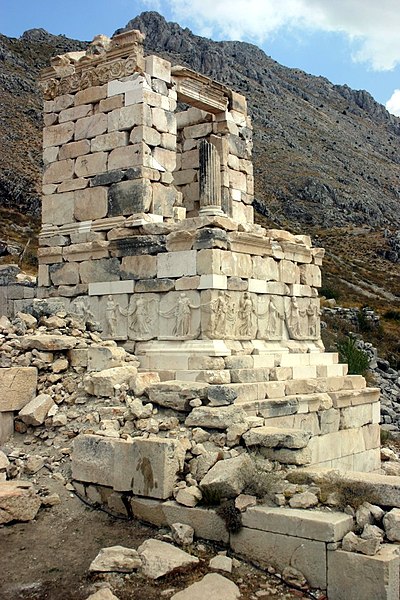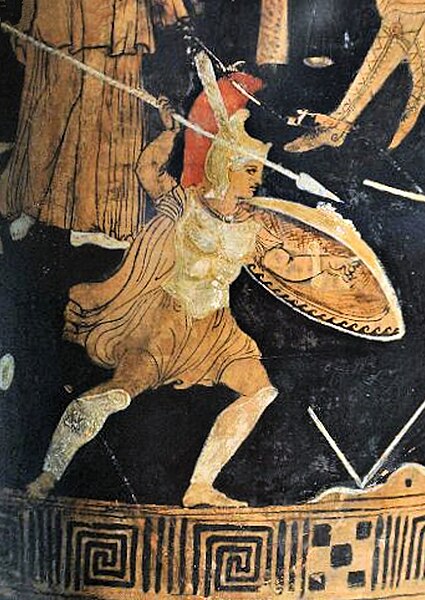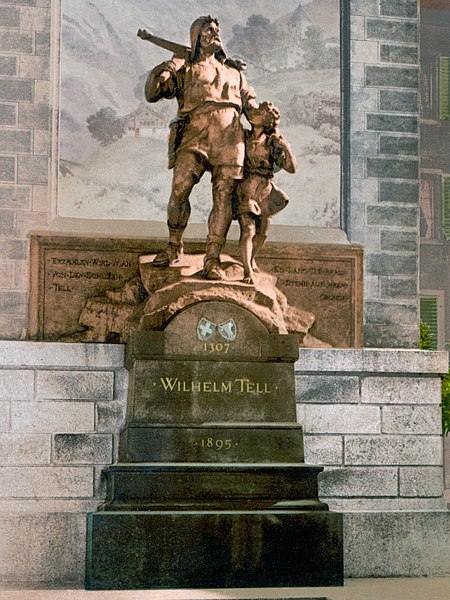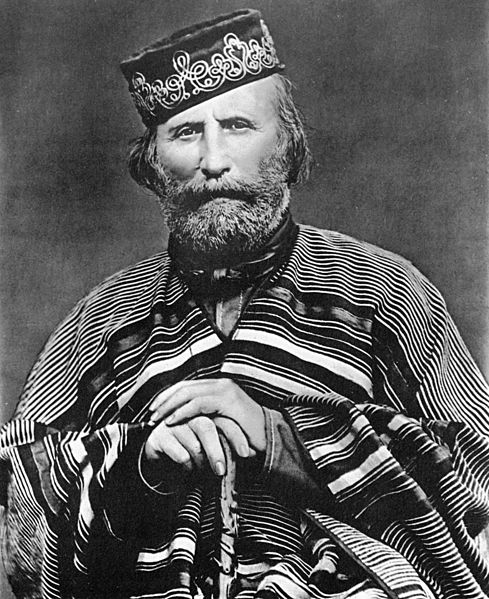Hero cults were one of the most distinctive features of ancient Greek religion. In Homeric Greek, "hero" refers to the mortal offspring of a human and a god. By the historical period, however, the word came to mean specifically a dead man, venerated and propitiated at his tomb or at a designated shrine, because his fame during life or his unusual manner of death gave him power to support and protect the living. A hero was more than human but less than a god, and various kinds of minor supernatural figures came to be assimilated to the class of heroes; the distinction between a hero and a god was less than certain, especially in the case of Heracles, the most prominent, but atypical hero.
Ruins of a hero-shrine or heroon at Sagalassos, Turkey
Cult of Oedipus on a Lucanian amphora, ca. 380–70 BC (Louvre, CA 308)
Offerings to a deified hero and another deity, depicted on a Greek marble relief ca. 300 BC
A hero is a real person or a main fictional character who, in the face of danger, combats adversity through feats of ingenuity, courage, or strength. The original hero type of classical epics did such things for the sake of glory and honor. Post-classical and modern heroes, on the other hand, perform great deeds or selfless acts for the common good instead of the classical goal of wealth, pride, and fame. The antonym of hero is villain. Other terms associated with the concept of hero may include good guy or white hat.
Achilles during the Trojan War, as depicted in an ancient Greek polychromatic pottery painting (dating to c. 300 BC).
Joan of Arc is considered a medieval Christian heroine of France for her role in the Hundred Years' War, and was canonized as a Roman Catholic saint
William Tell, a popular folk hero of Switzerland.
Giuseppe Garibaldi is considered an Italian national hero for his role in the Italian unification, and is known as the "Hero of the Two Worlds" because of his military enterprises in South America and Europe.







